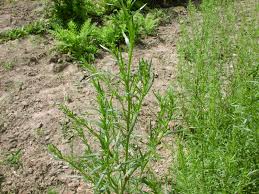THE INVESTIGATION OF THE CHEMICAL AND TECHNOLOGICAL PROPERTIES OF BIOMASS WASTE FROM PLANT RAW MATERIALS
Abstract
The aim of this work is to study the technical, chemical and group composition of biomass of the cotton crop (Cozipiym) and Shyralzhyn (Artemisia Dracunculus), to establish their suitability for obtaining chemical products. The results of the study established that the physical and chemical characteristics of Cotton crop and Shyralzhyn biomass is not inferior to oak wood and can be used for obtaining valuable chemical products and adsorbents. The study of the group composition of the analyzed plants showed that they can be used later on to produce cellulose, lignin and hemicellulose. The biomass of cotton crop and Shiralzhyn waste contains from 6.64 to 11% of pectin substances, which makes it possible to use as a sorbent against to ions of heavy metals and radionuclides. We isolated vegetable oil (fats) from the seed of tarragon polynyas – Shyralzhyn for the first time, the yield is 15.7%. The development of technology for the complex processing of waste from the cotton crop and Shyralzhyn (wormwood - tarragon) biomass are in prospective. Isolation of triglycerides (oils) from wormwood-tarragon kernels, by transesterification of esters, to produce methyl and ethyl esters of higher carboxylic acids, which can be used as additives to diesel fuels. Establish the main regularities of the recycling process. The extraction of extractive substances, such as tanning, natural dyes, lipids (waxes), antioxidants-polyphenols and pectins.
Downloads
Metrics
References
ЛИТЕРАТУРА:
Моисеев И.И. Зеленая химия. Траектория развития//Успехи химии. 2013. Т.82. №7. С. 616 - 622.
Флора Киргизской СССР: Определитель растений Киргизской ССР. Фрунзе: Илим, 1965. Т.11: Семейство Сложноцветные. 611 с.
Оболенская А.В., Ельницкая З.П., Леонович А.А. Лабораторные работы по химии древесины и целлюлозы. М.: Экология, 1991. 320с.
Афанасьев М.А., Тулякова Г.М., Арханянц В.А., Королев Л.П.. Количественные опыты по химии: пособие для учителей. М.: Просвещение, 1972. 191 с.
Азаров В.И., Буров А.В., Оболенская А.В. Химия древесины и синтетических полимеров. С-Пб.; С-Пб, ЛТА. 1999. 628 с.
Ерофеев Ю.В., Афанасьева В.Л., Глушков Р.Г. Хим.-фармацевт. ж.. 1990. № 7. С. 50-56.
Wozniak J.C., Dimmel D.R., Malcolm E.W. Wood Chem. and Techn. 1989. v. 9. № 4. Р. 491- 495.
Бабкин В.А., Леванова В.Р., Исаева Л.В. Химия в интересах устойчивого развития. 1994. т. 2. № 2—3. С. 559-564.
Фенелонов В.Б. Пористый углерод. Ин-т катализа СО РАН, Новосибирск. 1995. 518 с.
Сурикова С.И. Росс. хим. ж. (Ж. Росс. хим. об-ва им. Д.И. Менделеева). 1994. т. 38. № 5. С. 82 - 87.
Bansal R.C., Donnet J.B., Stoeckli F. Active carbon. N.Y., Basel: Marcel Dekker. 1988.
Далимова Г.Н. Сорбция ионов металлов техническими лигнинами и их производными//Химия природных соединений. 1998. №3.
Сартова К. А., Камбарова Г. Б., Сарымсаков Ш., Боркоев Б. М., Салиева К. Т. Исследование отходов хлопчатника (gossypium) с целью получения активных углей.// Проблемы современной науки и образования. 2016. №12 (54), DOI:10.20861/2304-2338-2016-54.
Морозов Е.Ф. Производство фурфурола: Вопросы катализа и новые виды катализаторов. М.: Лесная пром-сть. 1988. 198 с.
Голубев В.Н., Шелухина Н.П. Пектин: химия, технология, применение. М. 1995. 388 с.
Донченко Л.В. Технология пектина и пектинопродуктов. М. 2000. 255 с.
Биомасса, ее настоящее и будущее. Журнал Президиума АН СССР: Энергия.1984. №2. С.56-59.


This work is licensed under a Creative Commons Attribution 4.0 International License.
The authors, which are published in this journal, agree to the following conditions:
1. Authors retain the copyright to the work and transfer to the journal the right of the first publication along with the work, at the same time licensing it under the terms of the Creative Commons Attribution License, which allows others to distribute this work with the obligatory indication of the authorship of this work and a link to the original publication in this journal .
2. The authors retain the right to enter into separate, additional contractual agreements for the non-exclusive distribution of the version of the work published by this journal (for example, to place it in the university depository or to publish it in a book), with reference to the original publication in this journal.
3. Authors are allowed to post their work on the Internet (for example, in a university repository or on their personal website) before and during the review process of this journal, as this may lead to a productive discussion, as well as more links to this published work.











